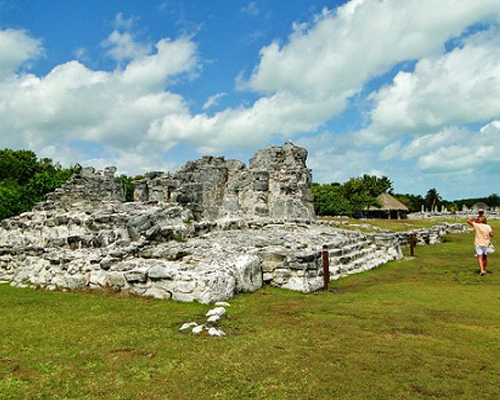How to enjoy the Mayan culture and its archaeological sites in Cancun.
Maya Museum of Cancun: A museum that houses one of the most representative collections of the Mayan culture in Mexico, with pieces that reflect the origin, development and daily life of the Mayan ethnic groups1. It is an exhibition space dedicated to the Mayan culture that is located in the Hotel Zone of Cancun. It has three rooms that show the history, art and daily life of the Maya of Quintana Roo and other regions. It also has an archaeological zone called San Miguelito, where you can see buildings, altars and burials of Maya.

Ruins of San Miguelito: An archaeological site that was one of the Mayan centers of the market for fishing, agriculture, salt production, honey, copal and cotton. It can be accessed through the Maya Museum of Cancun. It is the most important archaeological site in Cancun, which was part of the ancient cacicazgo of Ecab. The main economic activities of this province were fishing, agriculture, salt production, honey, copal and cotton. You can see 14 restored structures that are distributed in five architectural sets: the Great Pyramid, the South, the Dragons, Chaac and the North.
Chichen Itza: A World Heritage Site, about 200 kilometers from Cancun, which is one of the most visited archaeological sites in Mexico, where you can find the Temple of Kukulcan, considered one of the seven wonders of the modern world.
It is a World Heritage Site, about 200 kilometers from Cancun, which is one of the most visited archaeological sites in Mexico. It was one of the most important and powerful cities of the Mayan culture. Among its most outstanding buildings is the Temple of Kukulcan, considered one of the seven wonders of the modern world. You can also see the ball courts, the astronomical observatory, the sacred cenote and the temple of warriors.
Tulum: A Mayan city, built on a cliff facing the sea, which is considered one of the most important archaeological sites and cult center of the Riviera Maya. In ancient times it was the port of maritime and land trade in the region, as well as being an astronomical observatory23. It is a Mayan city, built on a cliff facing the sea, which is considered one of the most important archaeological sites and cult center of the Riviera Maya. In ancient times it was the port of maritime and land trade in the region, as well as being an astronomical observatory. Among its most emblematic buildings are El Castillo, El Templo del Dios Descendente (Temple of God Descending), El Templo del Viento (Temple of Wind) and El Templo Fresco (Temple Fresco).
